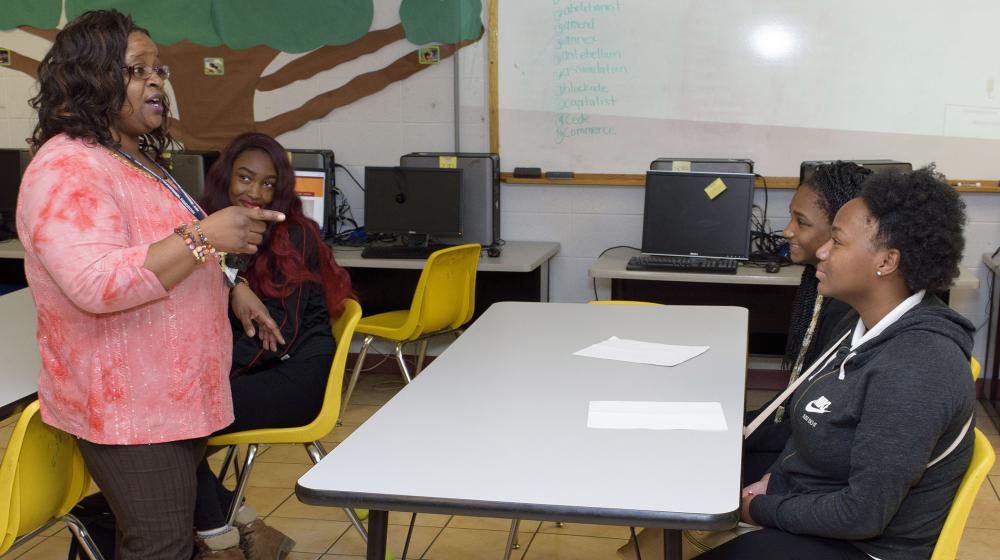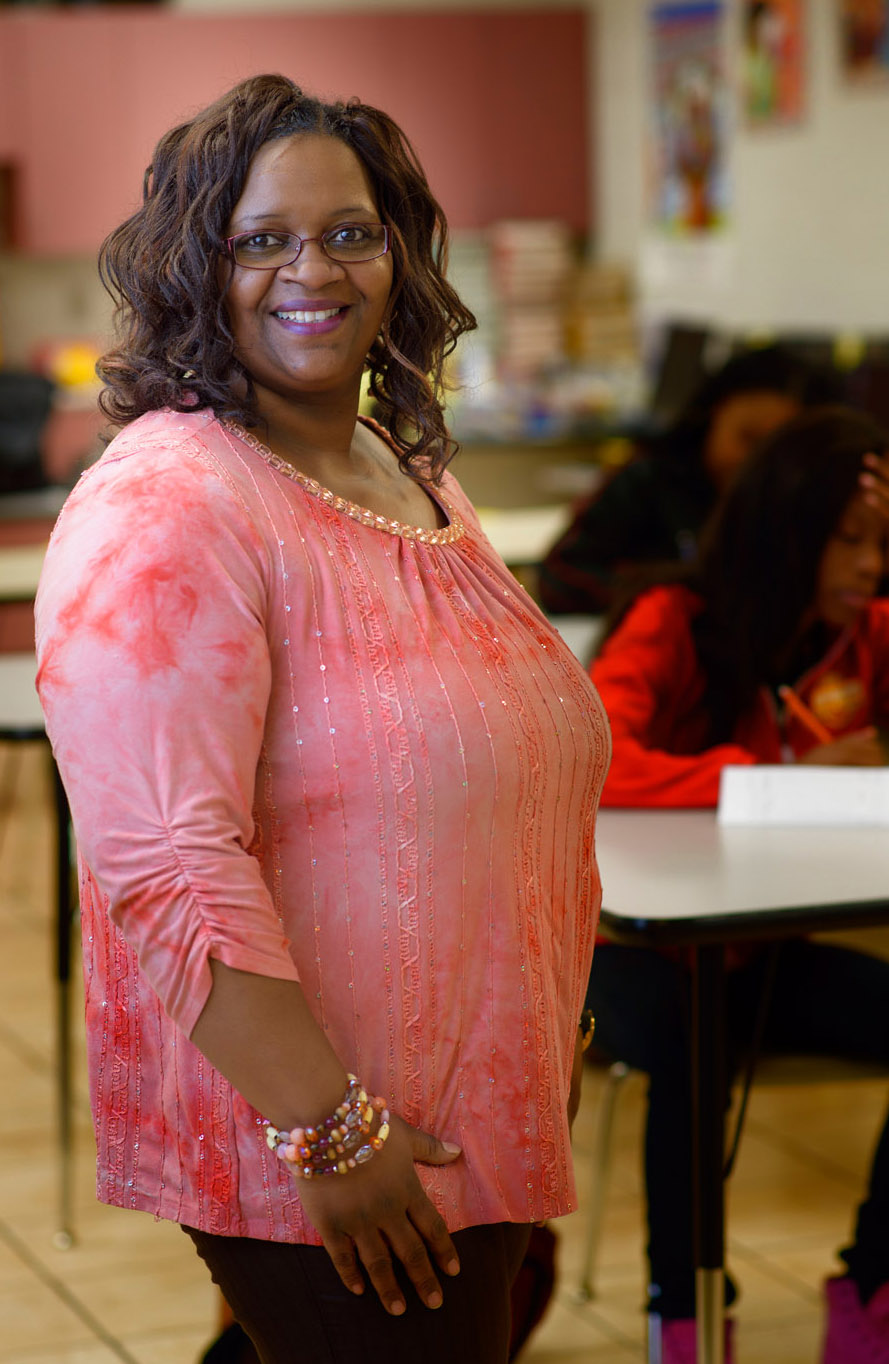Positive Life Changes

Cassandra Tittle (left), Coffeeville High School teacher, shares Walk-A-Weigh activity and nutrition strategies to help teens make healthier choices.
Program Helps Adults and Teens ‘Walk-A-Weigh’ from Old Habits
Story by Nathan Gregory • Photos by Kevin Hudson
When family and consumer sciences teacher Cassandra Tittle was approached about incorporating a wellness program into her health classes, Walk-A-Weigh was her first preference, because she knew first-hand how effective it could be.
“When I was introduced to the Walk-A-Weigh program, I was 249 pounds,” says Tittle, who has taught at the Coffeeville High School Vocational and Technical Center since 2008. “I recently weighed in at 203.”
Cassandra Tittle, Coffeeville High School Vocational and Technical Center Teacher
Walk-A-Weigh is a nutrition education and physical activity program that promotes healthy nutrition practices and increased physical activity for adults and high school students. Agents with the Mississippi State University Extension Service have been teaching the program since 2014.
Pamela Redwine, an MSU Extension agent in Yalobusha County, began teaching the program for adults in 2015 when Tittle participated, and she recently finished her fourth semester teaching the high school version in Tittle’s health class.
“Cassandra and I both served on a health advisory committee at Coffeeville High School,” Redwine says. “I suggested the adult Walk-A-Weigh program to the committee to be done with teachers and staff at the school as part of their school wellness program. She participated the first and second year I taught the program and saw great results.”

MSU Extension nutrition specialist Dr. Brent Fountain adapted the program for Mississippi in 2013 to customize the educational program and its strategies to improve nutrition and physical activity habits.
“We wanted a program that combined nutrition and physical activity, because the benefits are compounded by doing both,” he explains. “Nutritionally, the program hits the high points of what to include in a diet and what to avoid and has low-impact exercises anybody can do. Participants walk together as a group, so there is better accountability and they are able to walk farther, faster, or a combination of both as they progress.”
The adult and youth programs share many core competencies. These include being physically active for at least 30 minutes a day 5 days a week, eating at least three vegetables and two fruits every day, choosing water over drinks with sugar, reducing fat in recipes by choosing low-fat ingredients, and reading nutrition labels.
Redwine collects several types of data at the first and last meetings of each adult Walk-A-Weigh course, including weight, height, body mass index, blood pressure, and glucose levels. These data help determine how successful the participants are on the road to improved health. Participants in the adult program are also encouraged to use activity trackers that monitor each step they take during a day.
“The adult program focuses on weight loss and meal preparation, as well as developing a healthy lifestyle and exercise program,” Redwine says. “The youth program focuses on healthy lifestyles but does not stress weight loss. Since Cassandra’s health curriculum does discuss calorie needs, she helps them determine how many calories they should be consuming, and we discuss what causes weight gain and loss.”
Tittle said following the program quickly led to noticeable results, which motivated her to step up her exercise regimen on her own after completing the course.
“As a parent of two children, I wanted to be healthier for them,” she says. “Pamela helped make life changes fun and challenging. I started implementing healthier ingredients into meals, paying more attention to how much exercise I was getting, and finding ways to increase the number of steps I was taking each day.”
Taleigha Caldwell, a CHS sophomore and previous participant in Walk-A-Weigh, said she is also eating healthier and exercising more as a result of what she learned.
“This program was very informative and fun,” Caldwell says. “It has made me more aware of the foods I need to eat and the foods I need to stay away from. I am eating less sugar, drinking more water, and eating more fruit. I feel better and I have more energy.”


